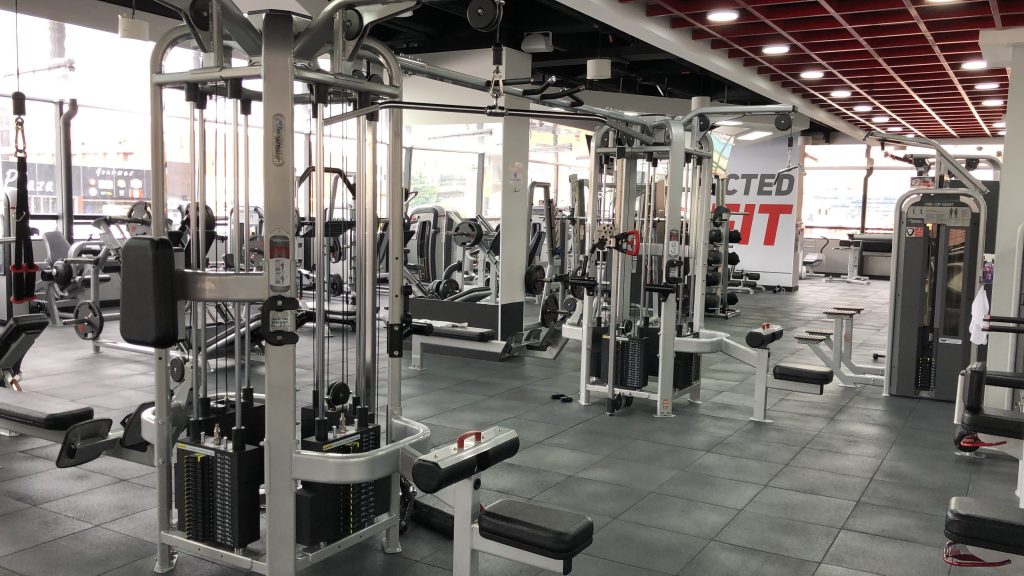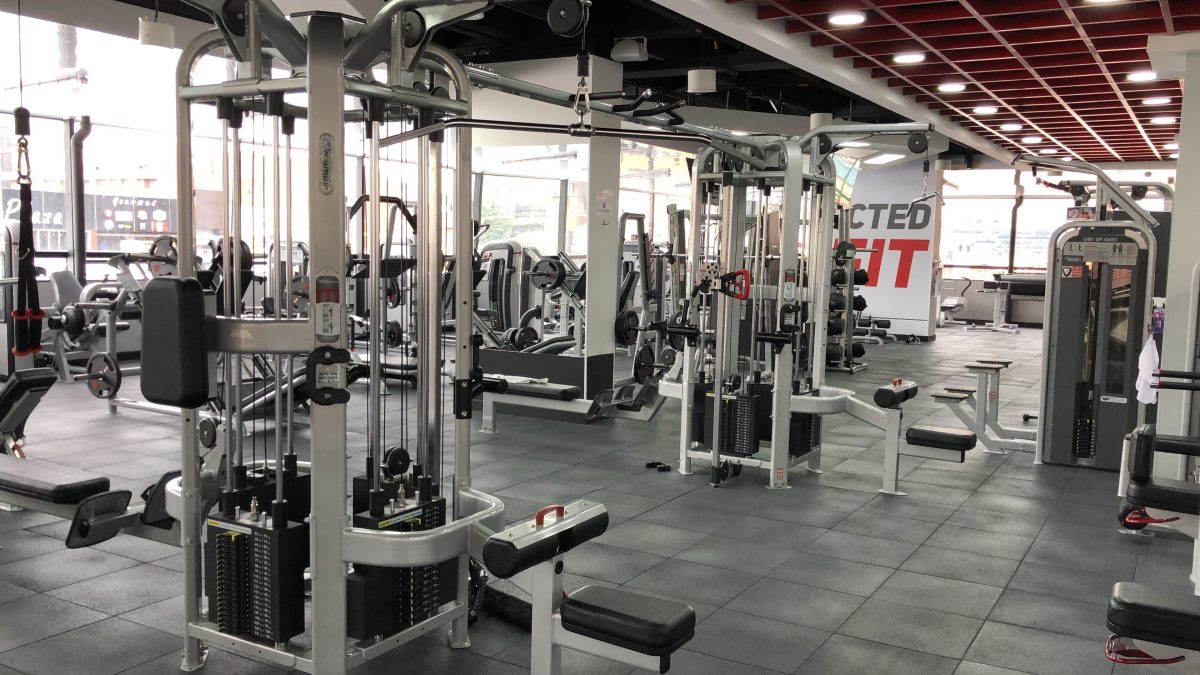Targeted strength training is crucial in competitive sports, but it also has its place in health and fitness training. Opinions differ on the type of “correct” strength training. Should you use free weights or machines?
The training of a ballet dancer looks very different from that of a long-distance runner or javelin thrower. And yet they all depend on one fundamental factor: the force produced by the musculature is the foundation of all movement. Force is defined as the ability to lift and overcome resistance in a controlled manner through the interaction of the nervous system and the musculoskeletal system. Among other things, you must distinguish the relationship between force generation and time:
- Maximum strength is the maximum force a muscle can exert in a single contraction.
- Speed strength is the ability to exert force as quickly as possible.
- Strength endurance means maintaining as much force as possible for as long as possible.
Therefore our muscles generate strength in very different ways and with different intentions. Depending on the specific training intention in the individual sports, either very high weights are lifted, medium weights are accelerated quickly, or low to medium weights are moved over a longer period of time. Therefore, speaking of strength training and only thinking of one form of training is just as inaccurate as speaking of sports and not defining what type of sport it is.
Strength in old age is crucial
It is not just athletes that need strength, but all people in everyday life. Simply moving around and performing daily tasks requires strength. In this context, strength becomes more and more important with increasing age. It is the basis of one’s independence from the 6th decade of life onwards. Despite this, only a small part of the increasingly aging population engages in efficient strength training. Even though no one likes to see themselves in a retirement or nursing home, very few people actively do anything about it. The gradual loss of strength in old age is therefore the main reason for physical inactivity and loss of independence. Strength training in some form is therefore an indispensable component of physical health for everyone.
This begs the question: what is the best type of strength training?
The same basic training principles apply to strength training as to other forms of exercise. We will not go into the different philosophies and opinions on the number of repetitions, speed of execution, etc., but rather into whether it makes more sense to train strength on strength machines and resistance equipment or whether the execution of the movement should be determined by the trainee himself (e.g. with free weight training, pull-rope training, balance and strength exercises with his own body weight).
Fitness centers prefer weight machines

This is where “expert opinion” is divided. Basically, free weights (dumbbells, barbells, bands, expanders) as well as resistance machines are very efficient training tools. However, both can be used very inefficiently if the most important principles are not known. In health-oriented fitness centers, you mostly see strength machines that precisely prescribe the movement. On the surface, there are training safety reasons for this. On the other hand, economic considerations such as simpler training, less supervision, higher customer throughput, etc. probably also play a role. Performing a strengthening exercise on a machine is actually associated with fewer sources of error. A target muscle can be trained in isolation and in a single, defined direction of movement. The load to be handled can be precisely defined on the machine and gradually increased. Many machines also allow the load path to be adapted to the physiological force development of the loaded joint.
Other advantages of weight machines are:
- Lower risk of injury
- Ease of training individual muscles and muscle groups,
- Guided movement
- Fine load adjustment
What are the benefits of gym strength in everyday life?
Considering that a muscular movement is always an interaction of nerve signals and musculature, the advantages of machines can also be a disadvantage. Exercises on free weights are much more demanding in terms of coordination. They implement more neuromuscular signals and allow for much more complex movement control due to the involvement of multiple muscles and muscle groups. While movements with dumbbells and elastic bands are more variable and demanding (supposedly too demanding for many), the results are certainly no worse when executed efficiently. Furthermore, they are often far more similar to everyday loads than guided movements.
The closer a strengthening exercise is to real everyday needs and movement patterns, the greater the effective benefit (e.g., lifting a beverage crate or hauling a suitcase down or up onto a cabinet). Even if the muscles you train are ultimately the same, you can imitate specific everyday activities much better with free weights than on weight machines.
The risk of injury is greater with multi-joint strength exercises with free weights. This is because they are more demanding in terms of coordination and allow for more errors than guided movements on machines. However, movements in everyday life are also not guided. Mistakes are just as easy to make with daily activities and sometimes have massive consequences. The argument that resistance equipment is supposedly safer is therefore only valid at first glance.
So which is better?
Once again, the truth in practice lies somewhere in the middle. Some fitness centers try to combine the two. They transfer the strength acquired easily and in a controlled manner on resistance machines to the whole body. This is done by incorporating exercises that are more demanding in terms of coordination. A combination gives you the advantages training with a machine and training with free weights.
Provided that fitness instructors are well trained and qualified, exercises with free weights or balance exercises with one’s own body weight are easy to learn. This is true even for older people who, for the above-mentioned advantages, like to be put on weight machines. This is ideal for many reasons. For example, avoiding a fall on a slippery surface cannot be learned with classic machine training. It requires coordinative skills and quick reflexes that can be practiced with appropriate balanced training. Free, three-dimensional strength training therefore benefits the elderly person in everyday life just as much as the sport-specific implementation of strengthening exercises benefits the competitive athlete. A strength gain alone is only half as good if it cannot be used in everyday life and sports.
Text from FITforLIFE – This blog post was provided to us by the Swiss magazine FIT for LIFE. If you want to read regularly informative knowledge articles in the field of running and endurance sports, click here.

